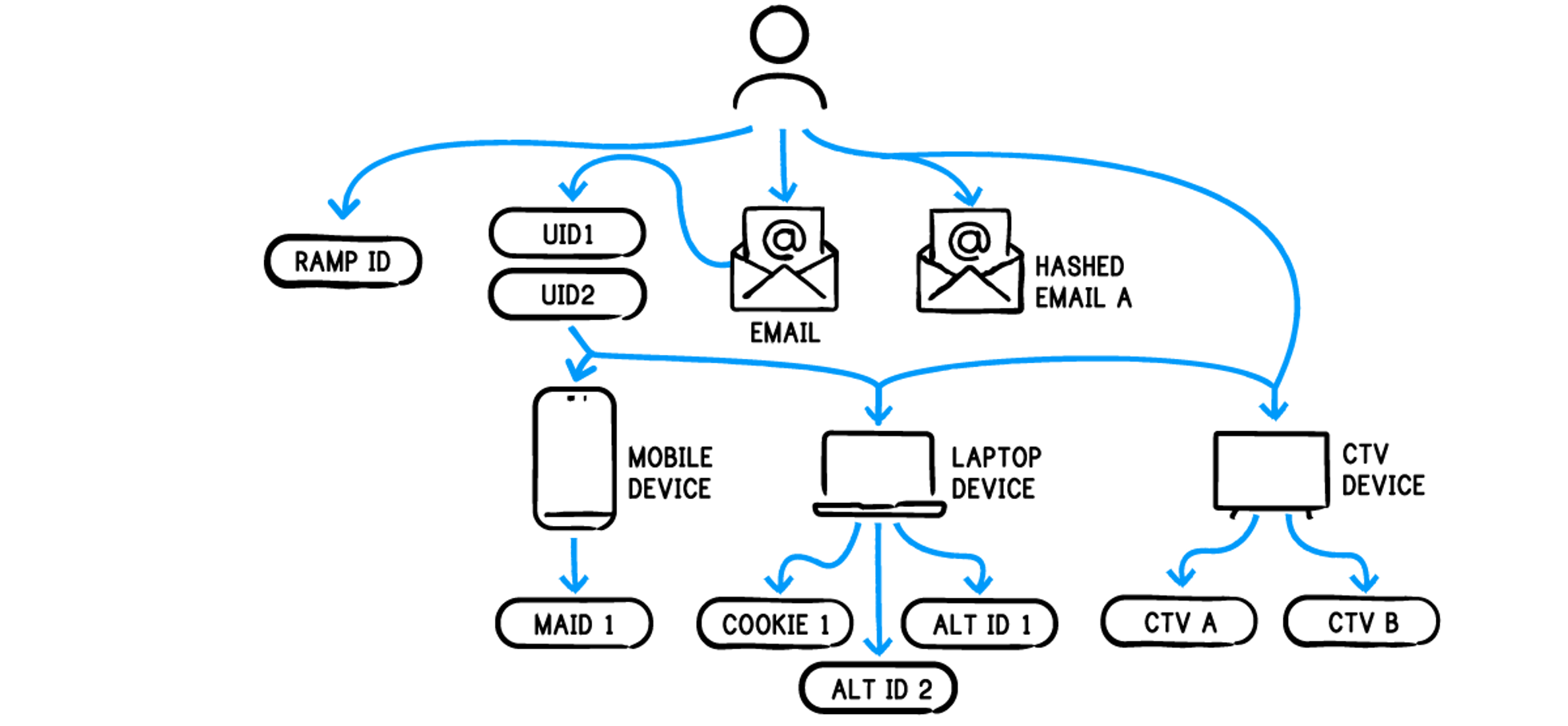Insights Omnichannel
For pharma marketers, connecting with HCPs starts with understanding their day

Recruiting fraud is a growing issue for many companies.
The Trade Desk takes this issue seriously and is taking steps to address it.
Share:
For a long time, the industry has taken identity solutions for granted, capitalizing on the extreme availability of third-party cookies and other traditional identifiers to power targeting strategies and back into attribution models. With Google Chrome’s announced intention to deprecate cookies and fast followers like Apple making similar changes to their IDs, digital advertising has had to reconsider the role of identity and the future of personalized marketing and journey mapping in driving effective return on investment. Before you can plan for the future of identity though, you need to understand how it’s used today and what will be available for use when third-party cookies disappear.
Read on for a breakdown of how identity graphs are built and what they’ll look like in the coming year.
So, what is identity resolution?
Simply put, identity resolution is the association of pseudonymized digital identifiers at the household and individual level for advertising use cases such as cross-device targeting, post-campaign measurement, and attribution.
How is an identity graph built?

Identity graphs, like the ones used by our Identity Alliance, are essentially built in three steps. They are composed of deterministic Identifiers clustered at the HH and individual level. The key to a great identity graph foundation is a sophisticated machine-learning model that can use the best data available to deliver scale and precision for targeting audiences across devices and channels.
Identifiers are clustered at the household and individual level based on their deterministic and probabilistic associations to one another.
At the household level are IDs like streaming device ID and Connected TV (CTV) IDs associated with specific apps. These identifiers live at the household level because they are often used for content consumption by multiple people, even at the same time.

At the individual level are IDs such as cookies, mobile ad IDs (MAIDs), and authenticated identifiers such as hashed email, LiveRamp’s RampID, or Unified ID 2.0, an email-based identifier.

By allowing advertisers to extend their campaigns at the household and individual level, Identity Alliance creates more opportunities to reach an audience across devices and ID types, and enables omnichannel strategies. Highly engaged platforms like CTV and lower-funnel channels like mobile web can come together in one media buying platform to create truly strategic campaign executions.

How is identity resolution evolving?
Heading toward the deprecation of traditional identifiers like cookies, which are typically associated with a device, marketers need to start shifting away from a cross-device mindset and consider targeting with a cross-identifier approach. Email is being used more and more frequently as an access point for content consumption on the open web and streaming services alike, serving as a cross-device identifier itself. Unified ID 2.0, an open-access identifier based on email, is a perfect foundation for cross-identifier targeting and measurement. Marketers can use identity resolution to resolve across cookieless identifiers rather than device-specific identifiers like cookies and MAIDs, using the most reliable and durable identifiers in the future of identity for activation.
How is identity used by The Trade Desk?
The Trade Desk’s offering, Identity Alliance, is a coalition of the industry’s leading identity graph solutions that seamlessly combines all people, households, and devices into a single, unified graph. This is integrated into The Trade Desk’s platform for planning, activation, and measurement. Identity Alliance will continue to be a foundational part of maximizing reach and managing frequency for advertisers. In the future, Identity Alliance is poised to continue evolving as the landscape shifts to rely more on deterministic solutions such as UID2 and RampID, as well as other emerging identifiers.
To get started with Identity Alliance, reach out to your designated account manager.
Insights Omnichannel

Case Studies Identity

Resources Identity
